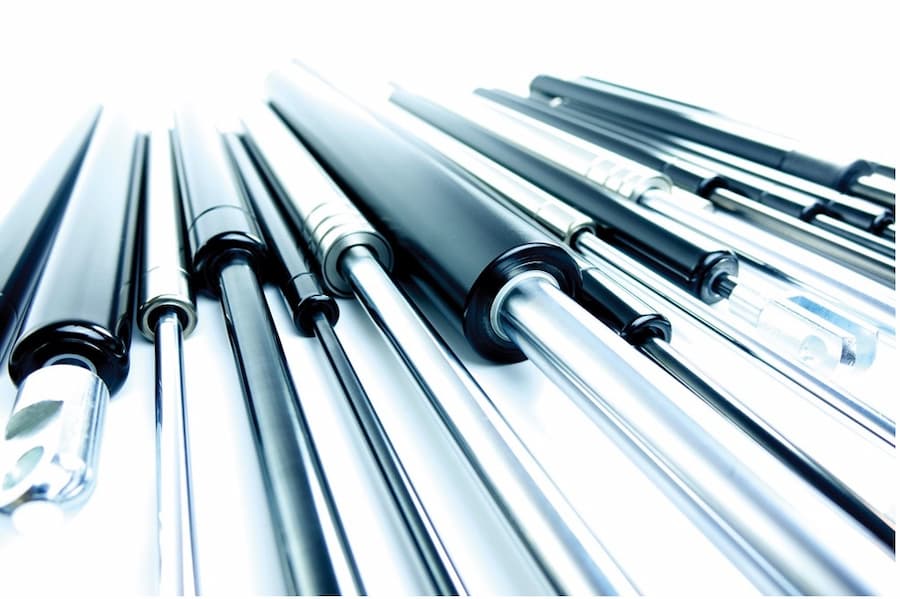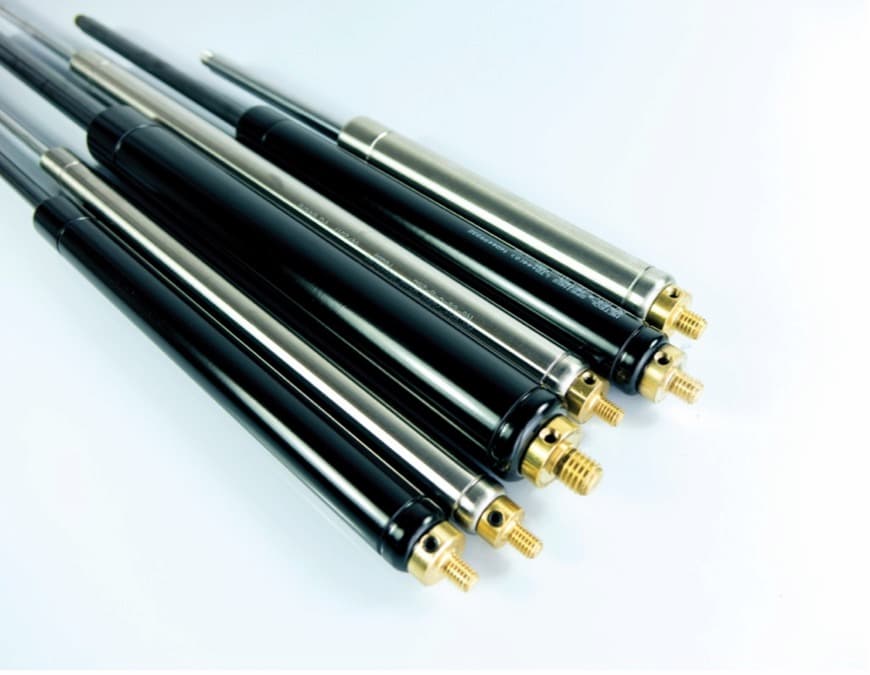Tips and Tricks for Designing with Gas Springs

Gas springs offer exceptional versatility and functionality in various projects. Because they provide controlled motion and support, they have become essential elements in a wide range of applications, from automotive mechanisms to industrial equipment to ergonomic furniture. This interesting spring type, indeed, offers a multitude of benefits; however, taking full advantage of its potential requires a good understanding of gas springs’ mechanics and specific design practices.
In this blog, we will delve into the basic principles, key insights, and tips for designers and engineers to unlock the power of gas springs. By understanding their mechanics and specific practices, you will feel more informed and prepared to use them effectively in your projects.
Gas Spring: Understanding the Basics
Gas springs operate on a simple yet effective principle: utilising compressed gas to generate force. Inside a gas spring, there’s a piston connected to a rod, with compressed gas (usually nitrogen) filling the cylinder. When the piston is compressed, it stores potential energy, which is then released when the force acting on it is removed, causing the gas to expand and extend the rod. This controlled extension and compression provide smooth and predictable motion, making gas springs ideal for applications requiring adjustable support or damping.
To better comprehend gas springs, one key factor needs in-depth analysis: their force characteristics. Unlike constant force springs, gas springs present a non-linear force profile, meaning the force they exert changes throughout their stroke length. Typically, they exert more force at the beginning and end of their stroke, with a weaker force in the middle. Designers and engineers need to consider this curve when integrating gas springs into their designs to make sure that the chosen spring will supply the necessary support throughout the desired range of motion.
How to Choose the Right Gas Spring for Your Application
Choosing the appropriate gas spring for a project is critical to guaranteeing its success. Several factors influence the selection process, including the required force, stroke length, and mounting orientation. Spring manufacturers like us provide detailed specifications for their gas springs, including force ratings and stroke lengths, helping designers make informed decisions. As we mentioned previously, it is essential to accurately calculate the force requirements of the desired application to select a gas spring that provides enough support without being overpowered or underutilised.
Additionally, considering environmental factors such as temperature and exposure to contaminants helps designers choose a gas spring with the right materials and sealing mechanisms for long-term reliability. Collaborating with experienced spring suppliers provides valuable insights into selecting the most suitable gas spring for a specific application. Taking the time to research and consider different options is key to guaranteeing the best performance a gas spring can offer.
Optimising Mounting and Installation
Proper mounting and installation are additional central factors for unlocking the full potential of gas springs in a specific design. Mounting considerations include:
- The orientation of the gas spring.
- The alignment with the application’s motion path.
- Sufficient room for smooth, unhindered movement.
Ensuring that the gas spring operates within specified parameters, such as temperature and load capacity, is also fundamental for preventing premature wear and various issues. In addition to this, other enhancements can come from:
- Incorporating safety mechanisms such as end fittings, brackets, and protective covers for better reliability and safety.
- Following the manufacturer’s guidelines for installation procedures to prevent leaks or misalignment.
- Conducting regular inspections and maintenance to preserve the integrity of the mounting system.
The Importance of Refining Performance and Adjustability
Gas springs offer excellent adjustability, allowing designers to fine-tune the motion characteristics to meet specific requirements. Adjustability is achieved through various means, like varying the initial gas pressure, changing the mounting position, or using dampers or valves as additional components. Here, experimentation and testing are key to optimising the performance of gas springs until the desired result is obtained.
Factors such as damping characteristics and rebound speed also help tailor the gas spring’s behaviour to suit the application’s needs. Simulation tools are used to predict the gas spring’s performance under different conditions, enabling more precise adjustments and optimisations. By leveraging gas springs’ adjustability, designers and engineers create versatile solutions that offer the perfect balance of support, motion control, and comfort.
Safety and Longevity as Top Priorities
Safety should always be a top priority when dealing with gas springs, especially in complex projects where they are subjected to heavy loads or high forces. Adopting redundancy measures, such as using multiple gas springs or incorporating mechanical stops, prevents catastrophic failure in the event of an unexpected malfunction. Also, regular maintenance and inspection protocols are invaluable practices for detecting any signs of wear or degradation early on before they escalate to something more serious.
Here are a few useful tips to make sure gas springs always ensure impeccable, secure performance:
- Proper handling and storage of gas springs before installation are also indispensable for maintaining their integrity and performance.
- Avoiding exposure to extreme temperatures, corrosive substances, or physical damage can substantially prolong the lifespan of the gas spring and prevent premature failure.
- Staying informed about industry standards for design and installation allows for compliance with safety regulations.
Stay Abreast of the Most Innovative Projects with European Springs IE
Staying abreast of the latest innovations and advancements in design and engineering is key to success.
At European Springs IE, we are a trustworthy partner for demanding specialists seeking excellent gas springs for their most innovative projects. With a commitment to quality, reliability, and innovation, alongside gas springs, we offer a diverse range of products, including compression and tension springs, to bring to life even the most intricate projects.
Whether you’re working on automotive mechanisms or industrial machinery, we can provide the perfect solution that is aligned with your needs. Contact us today to learn more about how European Springs IE will elevate your designs with top-notch gas spring solutions. Explore our stock catalogue and embark on your next project with confidence.




